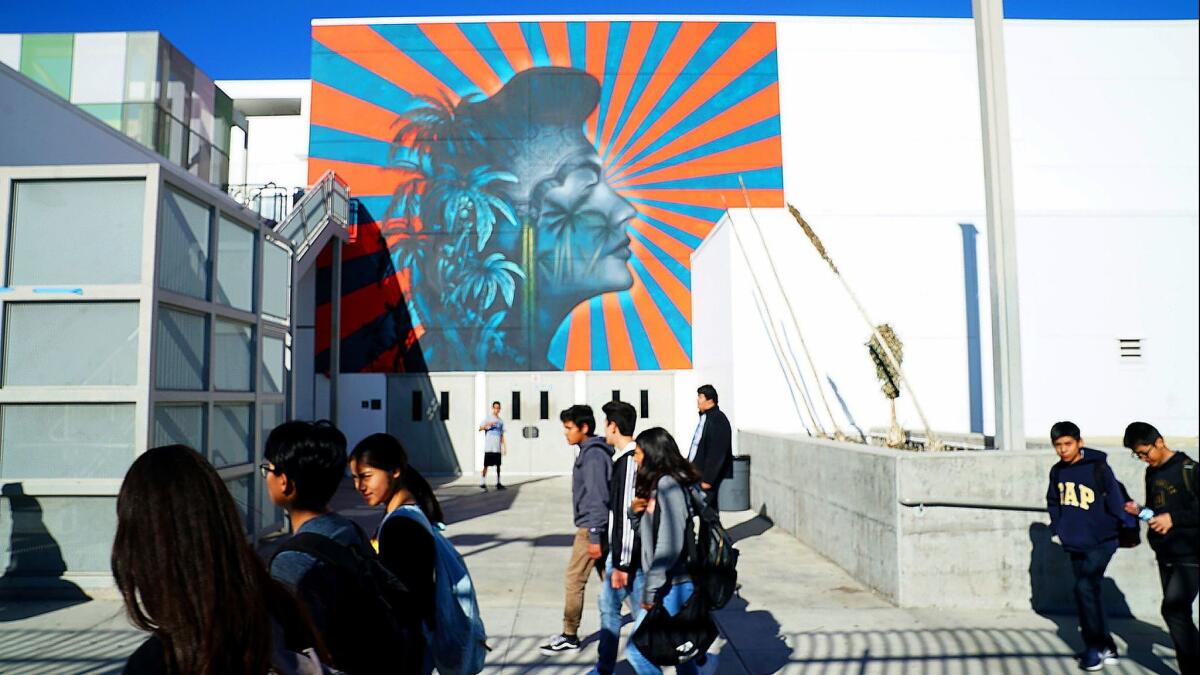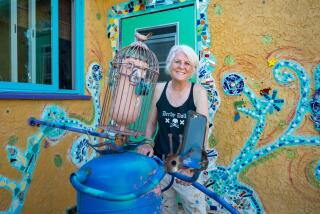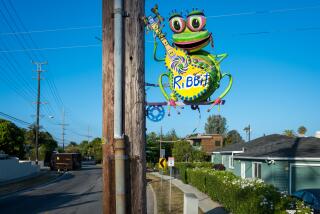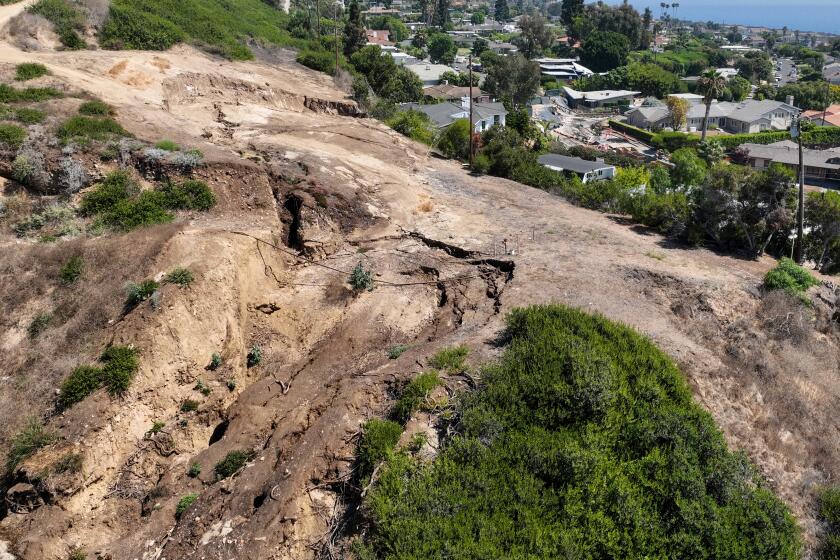Editorial: There’s no shortage of real outrages these days. L.A. Unified doesn’t need to overreact to a perceived one

Sunburst imagery has been around for centuries — for example, the distinctive pattern of lines radiating out from a central circle can be found in the early Catholic Church’s depictions of Christ’s halo. More recently, sunbursts were popular in the Art Deco and Pop Art movements. They also are a regular feature in the works of muralist Beau Stanton, including the giant portrait of Ava Gardner that adorns one of the exterior walls at the Robert F. Kennedy Community Schools in Koreatown.
Nevertheless, some Korean activists and community groups see something personal and harmful in the Gardner mural’s sunburst: echoes of Japan’s battle flag in World War II. Never mind that the sunburst in Stanton’s mural has different colors and proportions, and that background images like it are common online. And never mind that the mural is also decorated with coconut-laden palm trees, Moorish arches and other references to the mural’s inspiration: the Cocoanut Grove, the Old Hollywood hangout that once stood on the grounds now occupied by the school.
The Los Angeles Unified School district initially agreed to the activists’ request to remove the mural, only to put the decision on hold Monday. That was wise. This isn’t the L.A. Unified equivalent of a statue honoring a confederate general or a building named after a wealthy slave owner. It’s not even a veiled shout-out to Japanese imperialists. It’s an innocent homage to a celebrated local gathering spot that was demolished along with the Ambassador Hotel in the mid-2000s to make room for the school.
Stanton’s mural doesn’t “suggest” the battle flag just because it uses a sunburst pattern any more than innumerable other works with a sunburst pattern do.
Removing the mural would send a chilling message to artists whose work might run afoul of public sentiment — including those who, like Stanton, had no intention of offending anyone. Recognizing that, renowned artist Shepard Fairey has said he would have his own mural of Robert F. Kennedy at the complex painted over in protest if Stanton’s work is removed.
There is no question that the flag used by the Japanese Imperial Army represents abhorrent things to the people brutalized during the war. Koreans are particularly sensitive and rightly so, given the atrocities visited upon them. And the school’s location on Wilshire Boulevard in puts the image in front of many Koreatown residents daily.
Enter the Fray: First takes on the news of the minute from L.A. Times Opinion »
But contrary to its critics’ claims, Stanton’s mural doesn’t “suggest” the battle flag just because it uses a sunburst pattern any more than innumerable other works with a sunburst pattern do. One infamous use of that pattern doesn’t erase centuries of other uses, or poison all other uses going forward.
The episode is just the latest example of people seeking to erase something in the public eye that offends them, even when no offense was meant. We live in a time when our language and imagery have become minefields waiting to be detonated. There’s no lack of egregious behavior these days, including by newly emboldened white supremacists and Nazi sympathizers. We should focus our ire on real outrages, not perceived ones.
Follow the Opinion section on Twitter @latimesopinionand Facebook
More to Read
A cure for the common opinion
Get thought-provoking perspectives with our weekly newsletter.
You may occasionally receive promotional content from the Los Angeles Times.










